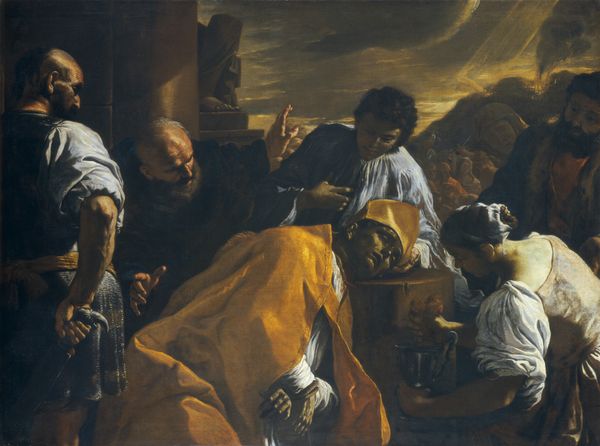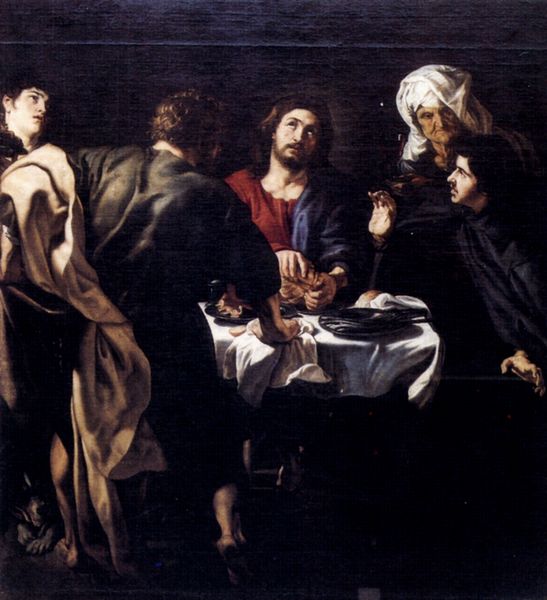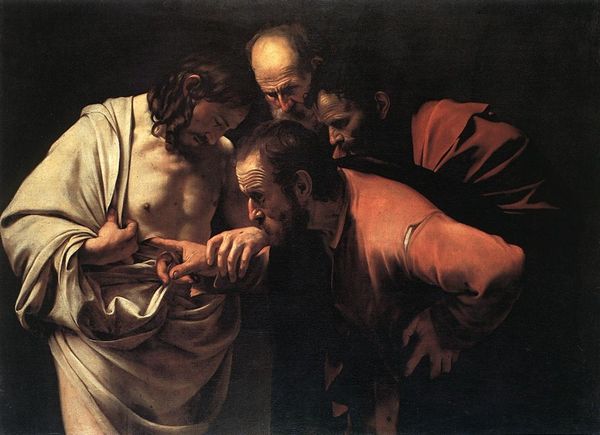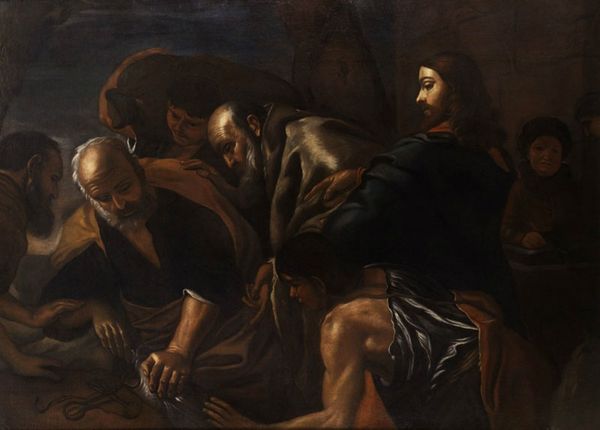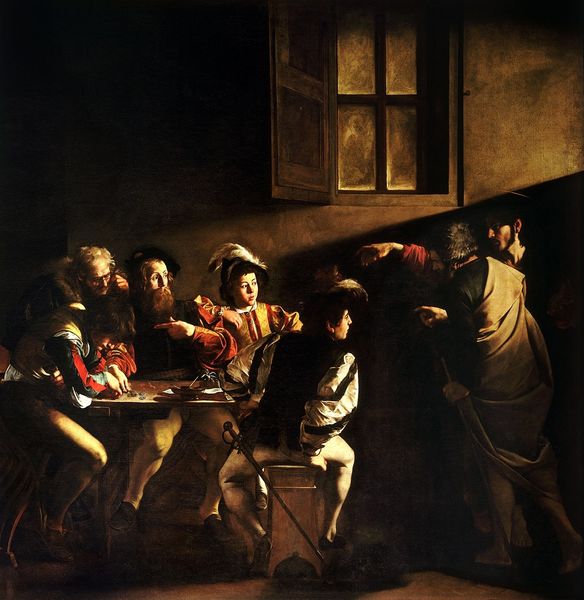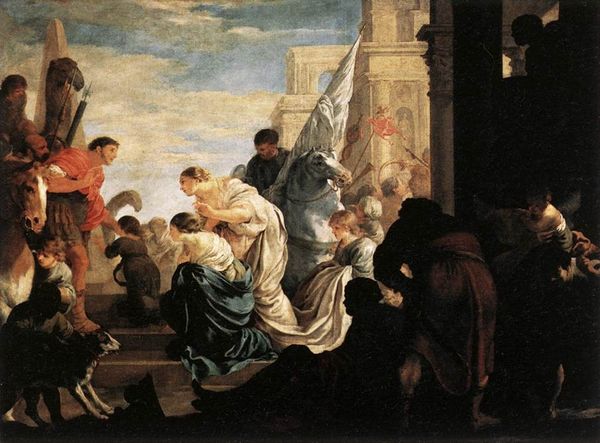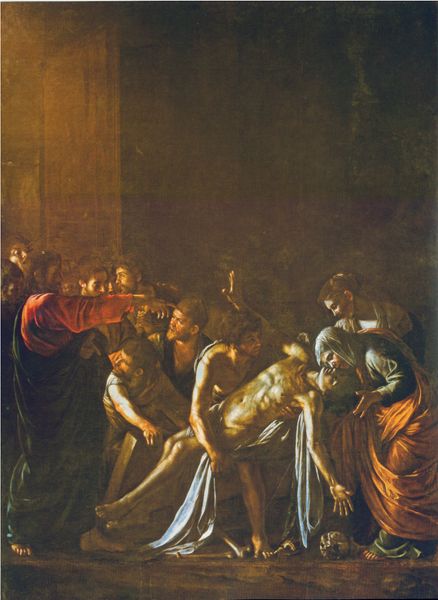
painting, oil-paint
#
baroque
#
painting
#
oil-paint
#
figuration
#
oil painting
#
history-painting
Copyright: Public domain
Editor: Mattia Preti's "The Martyrdom of Saint Gennaro," painted in 1685 with oils, is striking! The way Preti uses light and shadow is intense, and the composition, focused on the moment of beheading, is incredibly dramatic. What can you tell me about it? How do you interpret this work through the lens of its historical context? Curator: The painting invites us to consider power, belief, and spectacle within the socio-political context of 17th-century Naples. Preti's choice to depict the martyrdom with such stark realism serves not just as a religious narrative, but as a commentary on the control and demonstration of authority, both religious and secular, during a time of considerable social unrest and plague. How does this resonate, do you think, with the ongoing struggles around faith and governance even today? Editor: I see what you mean. The visible suffering becomes almost a political statement, or maybe a tool. But, the saint's story also inspires a message of hope. How do you see Preti balancing these themes? Curator: Absolutely. The spectacle of suffering often becomes intertwined with messages of resilience and defiance. Preti is playing with that tension, prompting us to reflect on how narratives of martyrdom are employed to legitimize resistance against oppression and to foster community solidarity. But, how far would you say art can change social views? Does it mostly speak to those already sharing certain beliefs? Editor: That's a great question! I guess this work proves it's complicated, as its multiple layers probably impacted different audiences uniquely. Thanks for providing such a valuable perspective. Curator: My pleasure. Exploring these complexities is precisely where art history connects with our contemporary struggles.
Comments
No comments
Be the first to comment and join the conversation on the ultimate creative platform.
